How-To
Configuring and Using Intel AMT (Out-of-Band Management), Part 2
In a previous article, I discussed my experience using Intel's out-of-band management (OOB) feature, Intel Active Management Technology (AMT). In this article, I will offer a deeper dive and further test the usefulness of AMT by using it to remotely install ESXi on a server.
Lately, I have playing around with deploying VMware's virtual desktop infrastructure (VDI) product, Horizon, on the edge—a remote rural location where service calls tend to be expensive (see my article here). In such situations, a server with OOB management is not a nicety but a necessity. Although installing or reinstalling an operating system (OS) remotely is not something that needs to be done frequently, I think it would be a good test of AMT's capabilities.
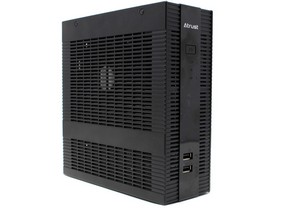 [Click on image for larger view.]
[Click on image for larger view.]
The server that I will be using is an ATRUST s101C with an Intel Xeon E3-1268L v3 processor, 32GB of RAM, two 2.5" SATA drives, and has Intel AMT. Its box is powered by a 19V, 4.7A AC-DC power brick. The server case measures 8 x 8 x 3 (specs are here), and the server has two 1Gb RJ45 ports. I attached both the RJ45 ports to my network via CAT5 cables.
After downloading VMware ESXi 7.6u2 ISO to my laptop, I brought up MeshCommander (located here), an open source web-based remote management tool that supports many of AMT's features, including remote desktop, and remote access to files.
After installing and launching MeshCommander, I clicked IDER, selected the ESXi ISO image, and then clicked OK.
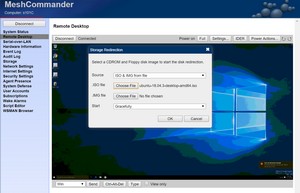 [Click on image for larger view.]
[Click on image for larger view.]
I selected Power on to IDE-R CDROM from the Power Action drop-down menu.
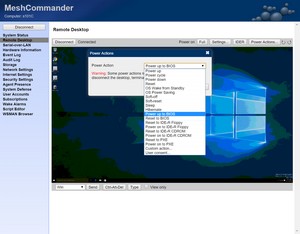 [Click on image for larger view.]
[Click on image for larger view.]
After a short pause, the ESXi installation process began. When queried, I instructed the installer to install ESXi to the SanDisk Cruzer Force flash drive that I had placed in one the server's USB ports.
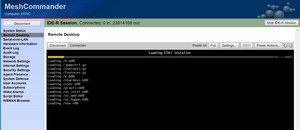 [Click on image for larger view.]
[Click on image for larger view.]
It took a considerably longer amount of time to install ESXi using AMT than by using local media, but it did install without any issues. After the system had installed and rebooted, I logged off MeshCommander.
I then brought up vSphere Console, and used it to add the server to my vSphere environment.
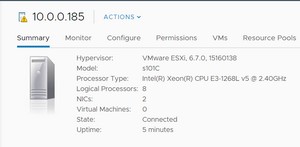 [Click on image for larger view.]
[Click on image for larger view.]
Next, I created two 476 GB datastores from the two SATA drives on the system, and used the datastores to host some Horizon virtual desktops.
 [Click on image for larger view.]
[Click on image for larger view.]
Conclusion
In some situations, using OOB is a simply a nicety, but there are cases of necessity, such as with edge devices where the other alternative would be sending someone out to a remote location to service the devices, which can be costly or in some cases an impossibility. I found that I was able to use Intel AMT to do everything, including working with BIOS settings, remotely installing an OS, and using it to access a remote OS. Although I used MeshCommander in the example above, there are many other tools that can also use AMT. There is even a way to use PowerShell scripts with AMT so you can automate day-to-day tasks.
About the Author
Tom Fenton has a wealth of hands-on IT experience gained over the past 30 years in a variety of technologies, with the past 20 years focusing on virtualization and storage. He previously worked as a Technical Marketing Manager for ControlUp. He also previously worked at VMware in Staff and Senior level positions. He has also worked as a Senior Validation Engineer with The Taneja Group, where he headed the Validation Service Lab and was instrumental in starting up its vSphere Virtual Volumes practice. He's on X @vDoppler.